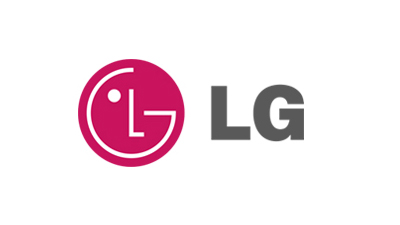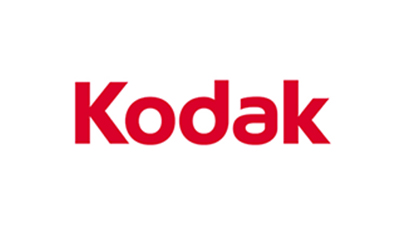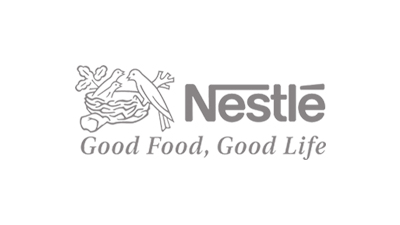
-
Report ID 138291 -
Published Date September 2024 -
Delivery Format PDF/PPT/Word -
Editor's Rating
-
Report Details
Report Overview
The global Drone Market is forecasted to grow from USD 34.4 billion in 2023 to an estimated USD 87.5 billion by 2033, with a Compound Annual Growth Rate (CAGR) of 10.10% throughout the period from 2024 to 2033.
Drones, also known as unmanned aerial vehicles (UAVs), have become increasingly popular in various sectors due to their versatility and efficiency. The drone market has expanded beyond military applications to include commercial, recreational, and governmental uses. Innovations in drone technology, such as improved battery life, camera quality, and autonomous operations, have propelled their adoption in fields like agriculture, real estate, and emergency response, further stimulating market growth.
The demand for drones is driven by their ability to access remote areas, collect data, and perform tasks that might be dangerous for humans. Industries such as agriculture have embraced drones for crop monitoring and pesticide spraying, significantly reducing labor costs and increasing precision. Additionally, the use of drones in delivery services is anticipated to surge as companies like Amazon move towards implementing UAVs for last-mile delivery solutions.
The drone market is ripe with growth opportunities, particularly in developing drone technology that complies with evolving regulatory standards across different countries. As airspace becomes more crowded, there is a growing need for sophisticated traffic management systems for UAVs, opening new avenues for innovation. Moreover, as the public becomes more aware of the environmental and logistical advantages of drone technology, market expansion is expected to accelerate, particularly in urban planning and infrastructure maintenance.
According to drone brands, Drones have witnessed a substantial increase in popularity, evidenced by the registration of over 1.7 million drones in the United States alone. The global drone market is on a robust growth trajectory, anticipated to surpass a valuation of $42 billion by 2025. Predominantly, China is at the forefront of drone production, capturing a staggering 79.8% of the worldwide market.
The consumer drone segment currently commands the largest share of the market. However, significant growth is expected in the agricultural sector, which is projected to utilize 60% of drones in the near future. This shift highlights the increasing application of drones beyond recreational uses, emphasizing their utility in commercial and agricultural settings.
The drone services sector itself presents a substantial economic opportunity, currently valued at $4.4 billion. A transformative trend in logistics is the adoption of drones for delivery, with over 30% of delivery businesses planning to integrate drone delivery systems by 2030. This reflects a strategic shift towards more efficient, technology-driven distribution methods.
Market affordability is enhancing, as evidenced by the declining average prices of drones, attributed to reduced production costs. Entry-level drones for hobbyists are now available for under $100, making them widely accessible. Conversely, high-end models, offering advanced features and capabilities, continue to command prices upwards of $1,000. This pricing spectrum underscores the broadening consumer base and the diverse applications of drones across different market segments
Key Takeaways
- The Drone Market is expected to grow significantly, reaching a projected size of USD 87.5 billion by 2033, up from USD34.4 billion in 2023. This represents a Compound Annual Growth Rate (CAGR) of 10.10% from 2024 to 2033.
- In 2023, the Rotary Wing Drone segment dominated the market, accounting for 62.3% of the overall market share. This segment’s robust performance highlights its widespread adoption and versatility in various applications.
- The Military segment was the largest in the drone market in 2023, holding 48.8% of the market share. The significant utilization in defense and military operations underscores the critical role drones play in modern warfare and surveillance.
- The Asia Pacific region led the drone market in 2023, capturing 40.2% of the global market. With revenues of USD 13.4 billion, APAC‘s leadership position is driven by rapid technological advancements and increasing drone adoption for commercial and recreational purposes.
Type Analysis
In 2023, the Rotary Wing Drone segment significantly influenced the drone market landscape, securing a dominant position with over a 62.3% share. This type of drone, characterized by its rotors which allow for vertical takeoff and landing, has proven especially popular due to its maneuverability and stability in the air. Rotary wing drones are highly favored in applications requiring hovering, precise positioning, or operations in congested areas, such as urban environments or rugged terrains.
The appeal of rotary wing drones extends across various applications, from commercial photography and film production to more critical uses like search and rescue operations, environmental monitoring, and infrastructure inspection. These drones provide exceptional control and agility, which are crucial in scenarios that demand precision and reliability. Additionally, their ability to carry different payloads, such as cameras, sensors, and even small cargo packages, adds to their versatility and utility in a broad range of industries.
The significant market share of rotary wing drones also underscores the ongoing innovations in drone technology, particularly in enhancing their operational efficiency and extending their battery life. Companies are continuously developing lighter materials and more efficient power systems to improve the endurance and flight capabilities of these drones. This focus on technological enhancement is likely to propel the market further, ensuring that rotary wing drones remain a preferred choice among drone enthusiasts and professionals alike.
Looking ahead, the rotary wing drone market is poised for further expansion. As regulatory frameworks evolve to accommodate more complex drone operations, and as technological advancements continue, the potential applications for these drones are set to increase. This expansion is not only expected to solidify the position of rotary wing drones in the market but also to open up new opportunities for innovation and growth within the sector.
Application Analysis
In 2023, the Military segment maintained a robust presence in the drone market, securing a commanding share of over 48.8%. This significant market dominance underscores the critical role that unmanned aerial vehicles (UAVs) play in modern military operations. Drones in the military are utilized for a variety of purposes, including surveillance, reconnaissance, and targeted strikes, providing a strategic advantage by enhancing situational awareness without putting personnel at risk.
The deployment of drones in the military extends beyond tactical operations. They are also used in training, border security, and damage assessment post-conflict. The versatility of UAVs allows armed forces to execute complex missions with greater precision and flexibility. Additionally, the integration of advanced technologies such as artificial intelligence (AI) and machine learning (ML) into these drones further amplifies their capabilities, enabling autonomous decision-making and real-time data analysis.
The dominance of the military segment in the drone market is also indicative of the substantial investments made by governments worldwide in defense technology. As geopolitical tensions persist and the need for advanced surveillance and defense mechanisms increases, the demand for military drones is expected to grow. These investments are not only aimed at expanding the capabilities of existing drone technologies but also at innovating new UAV forms and functionalities.
Looking forward, the military drone market is poised for continued growth as nations seek to bolster their defense capabilities in an increasingly digitized battlefield. Innovations in drone technology, such as improved stealth features, enhanced endurance, and interoperability with manned systems, are likely to drive further expansion of the overall Drone market.
Key Market Segments
By Type
- Fixed-Wing Drone
- Rotary Wing Drone
By Application
- Consumer
- Commercial
- Construction
- Agriculture
- Oil & Gas
- Mining
- Public Safety & Law Enforcement
- Others
- Military
Market Dynamics
Driver: Increasing Commercial Applications
One significant driver in the drone market is the broadening scope of commercial applications. Drones are increasingly utilized across various industries for tasks like aerial photography, videography, infrastructure inspection, agriculture, and environmental monitoring.
The flexibility and efficiency provided by drones, especially those equipped with advanced imaging technologies, allow for cost-effective operations and data collection, enhancing business operations and decision-making processes. Industries such as real estate, construction, and agriculture benefit significantly from drone capabilities, such as surveying large land areas or monitoring crop health, which would otherwise be more costly and time-consuming.
Restraint: Regulatory and Safety Concerns
Regulatory frameworks and safety concerns pose a significant restraint on the drone market. The integration of drones into national airspace systems involves complex regulatory challenges that vary by region, impacting the deployment and operational scope of drones.
Governments have to balance innovation and safety, imposing restrictions that sometimes limit the ability to fully exploit drone technology. This includes strict regulations regarding drone flight paths, operational ceilings, and no-fly zones, which can hinder the adoption and scalability of drone operations, especially in densely populated or sensitive areas.
Opportunity: Advancements in Drone Technology
The drone market sees a substantial opportunity in the ongoing advancements in drone technology. Developments in battery life, payload capacity, and autonomous operations are making drones more versatile and capable.
For instance, the growth of hybrid drones, which combine the benefits of fixed-wing and rotary-wing drones, caters to a broader range of applications by offering longer flight times and better maneuverability. These technological enhancements open new possibilities for drone applications in more complex and varied environments, potentially expanding market reach into new sectors.
Challenge: Technological and Operational Limitations
Despite technological advancements, operational and technological limitations remain a challenge. Drones are often limited by factors such as battery life, which restricts their flight duration and range.
Additionally, operational challenges such as the need for skilled operators and the integration of drones into existing workflows can pose significant hurdles. These limitations can be particularly challenging in environments that require high precision or in critical operations like emergency response, where reliability and response time are crucial.
Growth Factors
The drone market is experiencing robust growth due to innovations in drone technology, including improvements in battery life, camera quality, and autonomous flying capabilities of the drones. Advanced sensors and AI have enabled drones to perform complex tasks ranging from detailed inspections to delivering packages.
Regulations are also evolving to accommodate more widespread drone use, facilitating market expansion. For instance, as governments implement clearer guidelines regarding drone operations, companies find it easier to integrate drones into their business models.
Additionally, the decreasing cost of drone production due to improvements in technology and scaling production has made drones more accessible to a broader range of consumers and businesses, further propelling market growth. Lastly, there is a growing interest in drone technology among hobbyists and recreational users, which helps fuel innovation and market expansion.
Emerging Trends
The Drone Market is experiencing rapid evolution, with several emerging trends shaping its future.The integration of AI and machine learning in drones is enabling more autonomous operations. Drones are increasingly being utilized for last-mile delivery services, particularly in urban areas. Companies like Amazon and UPS are experimenting with drone deliveries to improve efficiency and reduce delivery times.
Additionally, Drones are becoming essential tools in construction for site surveys, progress tracking, and even safety inspections. In real estate, they are used to capture aerial images and videos of properties, enhancing marketing efforts. Drones are being used for precision agriculture, including crop monitoring, spraying, and mapping. This helps farmers optimize resource use, such as water and fertilizers, leading to increased yields.
As drone usage increases, so do the regulations governing their operation. Many countries are developing or updating their regulations to ensure safety and privacy while encouraging innovation. The introduction of Remote ID requirements in various jurisdictions is one example, helping authorities track drones in real time. The increasing number of drones in the skies has led to the development of Unmanned Traffic Management (UTM) systems.
Also,there is a growing emphasis on making drones more environmentally friendly. This includes using sustainable materials, developing energy-efficient systems, and even exploring the use of solar-powered drones for extended flight times.
Regional Analysis
In 2023, the Asia-Pacific (APAC) region emerged as a leader in the global drone market, commanding a significant market share of over 40.2% and generating revenue of approximately USD 13.4 billion. This dominant position highlights the rapid adoption and integration of drone technology across various industries within the region. Countries like China, Japan, and India have been at the forefront of this growth, leveraging drones for applications ranging from agriculture and infrastructure to logistics and defense.
China, in particular, has been a key driver of the APAC region’s dominance, with its strong manufacturing capabilities and large-scale production of drones. The country is home to some of the world’s leading drone manufacturers, which have significantly influenced global supply chains and pricing strategies. Moreover, the Chinese government’s support for innovation and the integration of drones into various sectors has further accelerated market growth, enabling widespread use of UAVs in both commercial and military applications.
Japan and India have also contributed to the region’s strong market position. Japan has embraced drones for purposes such as disaster management, agricultural monitoring, and industrial inspections. The country’s stringent safety regulations and focus on technological innovation have fostered a mature drone ecosystem. India, on the other hand, has seen a surge in drone adoption for agricultural purposes, infrastructure development, and surveillance, driven by government initiatives to promote digitalization and technological advancement.
The APAC region’s continued investment in drone technology, coupled with a rapidly growing tech-savvy population and expanding industrial base, suggests that its market dominance will persist. As regulatory frameworks in these countries continue to evolve, and as drone technology becomes more accessible and affordable, the APAC region is poised for even greater growth. This expansion is expected to create new opportunities for both domestic and international players, further solidifying APAC’s leadership in the global drone market.
Key Regions and Countries
- North America
- US
- Canada
- Europe
- Germany
- France
- The UK
- Spain
- Italy
- Russia
- Netherlands
- Rest of Europe
- Asia Pacific
- China
- Japan
- South Korea
- India
- Australia
- Singapore
- Thailand
- Vietnam
- Rest of APAC
- Latin America
- Brazil
- Mexico
- Rest of Latin America
- Middle East & Africa
- South Africa
- Saudi Arabia
- UAE
- Rest of MEA
Key Player Analysis
The Drone Market is shaped by several key players who are leading the industry with innovative technologies and products.Among the top companies, DJI stands out as a global leader, known for its advanced consumer and professional drones and commanding a significant share globally. Known for its high-quality drones, DJI offers a wide range of products that cater to both consumer and professional markets. Their drones are praised for their reliability, advanced features like obstacle detection and GPS stabilization, and user-friendly interfaces.
Draganfly Inc. is another key player, recognized for its focus on specialized drones, particularly in sectors like agriculture, public safety, and industrial inspections. Draganfly’s drones are known for their durability, precision, and advanced imaging capabilities. The company has also made significant strides in integrating artificial intelligence and machine learning into its drone systems, allowing for more efficient and autonomous operations. Draganfly’s commitment to innovation and its ability to cater to niche markets make it a strong contender in the industry.
EHang stands out as a pioneer in autonomous aerial vehicles, particularly in the area of passenger drones. The company has been at the forefront of developing and testing autonomous air taxis, which could revolutionize urban transportation. EHang’s focus on creating eco-friendly, sustainable aerial solutions has positioned it as a leader in the emerging field of urban air mobility. Their innovative approach and vision for the future have earned them a strong reputation and a key role in the drone market’s evolution.
Top Key Players in the Drone Market
- DJI
- Draganfly Inc.
- EHang
- YUNEEC International
- Denel Dynamics (Denel SOC Ltd)
- Parrot Drones SAS
- Delair
- Aeronavics Ltd.
- AeroVironment, Inc.
- Autel Robotics
- Other Key Players
Recent Developments
- DJI (March 2023): DJI introduced the DJI Inspire 3, an advanced drone aimed at professional filmmakers. The Inspire 3 features a full-frame 8K sensor, increased flight time, and enhanced stabilization technology, targeting the high-end cinematic market. This launch further solidifies DJI’s leadership in the professional drone market.
- EHang (June 2023): EHang announced the successful completion of a series of autonomous test flights for its EH216-S passenger-grade autonomous aerial vehicle (AAV) in Japan. This development is part of EHang’s ongoing efforts to expand its urban air mobility (UAM) initiatives globally
- Autel Robotics (July 2023): Autel Robotics launched the EVO Max 4T, designed specifically for industrial applications. The drone includes advanced AI capabilities for autonomous inspection and mapping tasks. Autel has been focusing on expanding its footprint in the enterprise sector, particularly in public safety and infrastructure
- Parrot Drones SAS (January 2024): Parrot introduced the ANAFI Ai, the first 4G-connected drone, which integrates seamlessly with mobile networks for enhanced range and data transfer. This innovation is geared towards professional applications, including surveying and agriculture, providing users with real-time data and enhanced connectivity.
- AeroVironment Inc. (February 2024): AeroVironment completed the acquisition of Telerob Gesellschaft für Fernhantierungstechnik mbH, a company specializing in ground robots for defense applications. This acquisition is part of AeroVironment’s strategy to broaden its capabilities in unmanned systems, combining aerial and ground robotic technologies.
-
Table Of Content
Research Insights & Deliverables
 Development and Future Forecast
Development and Future Forecast Competitive benchmarking
Competitive benchmarking Company Revenue Statistics
Company Revenue Statistics Rising Regional Opportunities
Rising Regional Opportunities Technology Trends and Dynamics
Technology Trends and Dynamics Technology Assessment
Technology Assessment
-
Inquiry Before Buying
Research Insights & Deliverables
 Development and Future Forecast
Development and Future Forecast Competitive benchmarking
Competitive benchmarking Company Revenue Statistics
Company Revenue Statistics Rising Regional Opportunities
Rising Regional Opportunities Technology Trends and Dynamics
Technology Trends and Dynamics Technology Assessment
Technology Assessment
-
Request Sample
Research Insights & Deliverables
 Development and Future Forecast
Development and Future Forecast Competitive benchmarking
Competitive benchmarking Company Revenue Statistics
Company Revenue Statistics Rising Regional Opportunities
Rising Regional Opportunities Technology Trends and Dynamics
Technology Trends and Dynamics Technology Assessment
Technology Assessment














